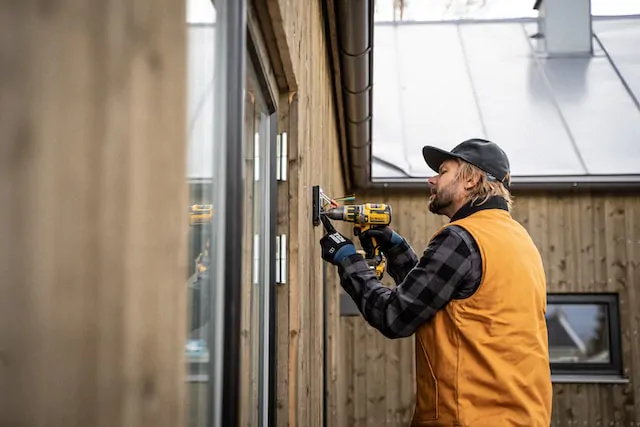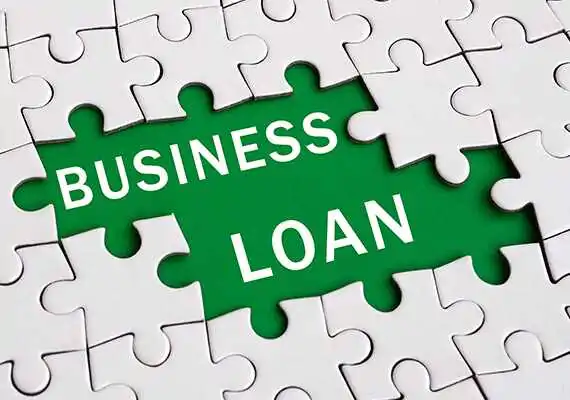How much does it cost to assemble a Prototype PCB?

Introduction
When launching a new electronics hardware product, building prototype printed circuit boards (PCBs) is a critical step before committing to full production. Prototyping allows validation of the design, testing of functionality, and de-risking manufacturing.
However, prototype assemblies can have high costs compared to high volume production. It’s important to budget adequately and understand what factors drive prototyping expenses.
This article will examine typical prototype costs and what variables impact the overall price. We’ll look at strategies for optimizing BOMs, assembly options, and approaches to reduce prototyping costs without sacrificing quality.
Typical Prototype Costs
Prototype build costs can vary widely based on:
- Board complexity
- Bill of materials (BOM)
- Type of assembly
- Order volume
- Testing requirements
For simple, low component count boards, prototype costs often range from $$500 – $1500.
For complex boards with hundreds of parts, prototypes can cost $$5000 – $50,000+.
High mix boards with many different component types will fall on the higher end. Builds with expensive processors or special materials also increase costs.
Below we’ll break down the cost factors in more detail.
Cost Drivers in Prototype Assembly
The primary drivers of prototype PCB assembly pricing include:
Board Fabrication
Base cost of materials, layer count, and tolerances to physically manufacture the bare PCBs. This ranges from $200 – $2000 per board for typical prototypes.
Components
Total cost of the bill of materials (BOM) which must be sourced for the build. This often dominates overall cost.
Assembly
Cost of population including labor, equipment, and overhead. Typically $100 – $500 per board depending on complexity.
Testing
Expense of validation and inspection during assembly and after build. From $50 – $500+ per board.
Quantity
Total number of boards assembled. Cost per board drops significantly with volume.
Lead Time
Faster turnaround demands production prioritization and incurs premiums.
Margin
Added markup above base costs that assembly providers build in. 10-30%+
NRE Fees
Non-recurring engineering charges for net new setups and programming.
Let’s explore each of these major contributors to understand how to optimize for cost.
Optimizing Board Fabrication Costs
The base fabrication of the bare PCBs themselves involves tradeoffs between cost and capability:
Higher Layer Count – Adds processing steps and materials expense. But enables dense, complex routing.
Advanced Materials – Special substrates for RF, flex, etc cost more than FR-4.
Tight Tolerances – Holding tighter tolerances increases tooling time andscrap rate.
High-mix vs Panel – Single boards cost more than panelized designs.
Onshore vs Offshore – Local fabs charge more but avoid shipping.
Quickturn – Faster lead times increase labor and machine costs.
Strategies to Reduce Board Fab Costs:
- Standardize on commonly used materials like FR-4.
- Use the minimum number of layers that meets design rules.
- Specify industry standard thickness and finishes.
- Build margin into tolerances for better yields.
- Panelize multiple boards when layout permits.
- Consider offshore options for volume production.
- Plan early and avoid quickturn services if possible.
Balancing performance needs and budget requires experienced engineering judgement.
Optimizing Component Costs
The BOM often accounts for over 50% of total prototype cost. Every part adds up.
Techniques to lower BOM costs:
- Substitute more expensive components with cheaper acceptable alternates.
- Consolidate designs to shared, high volume components where possible.
- Scale quantities based on actual need for prototyping. Avoid excess units.
- Re-use existing inventory from previous builds if available.
- Leverage approved vendor lists to get bulk pricing.
- Avoid expensive sole-sourced or custom parts if possible.
- Check alternate vendors for same parts for cost comparison.
- Shrink component package sizes to save costs.
- Reduce number of unique parts numbers and suppliers.
- Negotiate pricing and MOQs with volume commitments.
Each $1 part trimmed from the BOM adds up significantly across builds.
Optimizing Assembly Costs
The assembly process itself represents a major portion of total cost.
Tips for lowering assembly expenses:
- Simplify overall board layout and reduce part counts.
- Eliminate odd shaped boards requiring special fixturing.
- Minimizelayer transitions and vias requiring manual steps.
- Reduce or avoid through hole component use which adds labor.
- Maximize easy-to-place chip components vs connectors.
- Consolidate BOMs around common parts and packages.
- Use standard SDAs for known good operating margins.
- Shift test steps to suppliers’ lower cost locations.
- Compare multiple assembly vendors’ pricing.
- Leverage existing preferred vendor relationships.
Overall, optimizing designs for manufacturability lowers cost and risk.
Economies of Scale with Volume
Prototyping assembly pricing is highly dependent on quantity. The more boards ordered, the lower the cost per board:
| Quantity | Cost per Board | Total Cost |
| 10 boards | $1,500 | $15,000 |
| 25 boards | $1,000 | $25,000 |
| 100 boards | $750 | $75,000 |
| 500 boards | $500 | $250,000 |
This reflects spreading setup costs over more units. Building a panel to assemble multiple boards simultaneously also improves cost.
Evaluate your volume needs upfront and buy in bulk if possible. Extra boards can be used for testing, demos, etc.
Managing Lead Times
Normal assembly lead times range from 2-8 weeks for prototypes. Rushing delivery incurs substantial expediting charges:
- 2 Week Lead Time – 50-100% premium
- 1 Week Lead Time – 100-200% premium
Avoid quickturns unless absolutely necessary for your schedule. Plan early with assembly partners to secure reasonable lead times.
Reducing Test Costs
Testing is crucial but adds cost. Tailor test programs to meet true needs:
- Perform design validation before committing to prototypes.
- Start with a smaller pilot build before full volume.
- Align test coverage to risk profile of the design.
- Execute tests on low cost test boards where feasible.
- Limit high cost tests like shock, vibration to later refined units.
- Define test pass/fail criteria upfront with suppliers.
- Analyze failures thoroughly and change only what is necessary.
- Consider test engineering consulting to optimize program.
Right size testing to match the program’s maturity level.
Summary of Prototyping Cost Optimization
- Simplify designs as much as possible
- Substitute expensive components
- Consolidate BOMs around common parts
- Carefully manage quantities and inventory
- Standardize materials, finishes, and processes
- Design for optimal manufacturability
- Compare multiple assembly vendors
- Build margin into schedules and negotiate lead times
- Strategically phase test programs over prototype cycles
- Scrutinize every cost driver through the full process
Prototyping Cost Calculator Example
This spreadsheet calculates an estimate total prototype cost based on key variables:
| Parameter | Value | Cost |
| Board Layer Count | 6 Layers | $1,500 per board |
| Board Quantity | 25 boards | $37,500 |
| Component Count | 200 components | $50 per component |
| Components Cost | 200 x $50 = $10,000 | $10,000 |
| Assembly Complexity | Moderate | $300 per board |
| Assembly Cost | 25 x $300 = $7,500 | $7,500 |
| Testing | Moderate | $250 per board |
| Testing Cost | 25 x $250 = $6,250 | $6,250 |
| Total Estimated Prototype Cost | $61,250 |
Adjust inputs to match your specific build parameters to arrive at a budgetary cost. Get firm quotes as designs progress.
Conclusion
Prototyping is a significant investment, but pales in comparison to the costs of mistakes caught after production. Allocating adequate budget ensures you can fully validate your product before release.
There are many levers to refine designs, negotiate pricing, and properly scale test programs. Finding the right balance of cost management and quality protection is key. With the strategies outlined above, you can scope your next prototype build accurately and get the confidence needed to turn innovative ideas into shipping products.
Frequently Asked Questions
What are typical margins charged on prototype builds?
Assembly providers typically charge margins in the range of:
- 10-30% on components
- 20-50% on assembly services
- 30-100% on test services
Higher margins apply to complex builds and quick turn needs. Leverage preferred suppliers for lower margins.
What are ways to reduce prototype costs?
Top ways to reduce prototyping costs include:
- Simplifying board layout and BOM
- Standardizing components and packaging
- Eliminating custom or complex assemblies
- Designing for optimal manufacturability
- Comparing multiple assembly vendors
- Adjusting order volumes to real need
- Re-using existing materials and inventory
- Allowing standard lead times
- Right sizing test requirements
What are the hidden costs in prototyping?
Some hidden costs to budget for include:
- Components samples for design validation
- Inventory and component hoarding
- Multiple test boards for bring up and debug
- Multiple re-spins to fix issues
- Failures requiring rework and troubleshooting
- Additional test equipment needs
- Consulting fees for debug or validation
- Re-programming equipment for changeovers
Plan margin for the unknowns and risks in prototyping.
When does high volume production pricing start?
True mass production pricing typically occurs at volumes above:
- 1,000 boards for a simple board
- 5,000 – 10,000 boards for a moderate complexity board
- 25,000+ boards for very complex, high mix boards
Work with your contract manufacturer to understand breakpoints for your product cost model.
How can I forecast prototype cost estimates?
- Leverage parametric calculators that estimate based on key variables
- Start with budgetary guidance by board complexity
- Review quotes from previous similar builds
- Generate separate estimates for PCB, BOM, assembly, test
- Inflate estimates by 20%+ margin for unknowns, especially for new designs
- Get budgetary quotes from potential fabrication and assembly partners
Refine estimate accuracy as design progresses.





